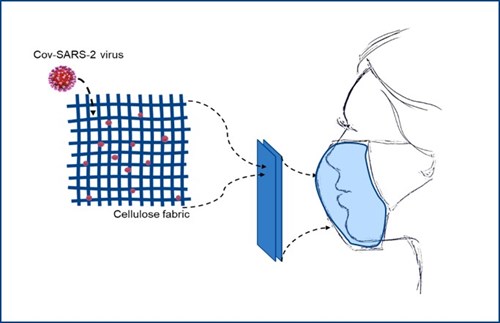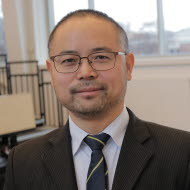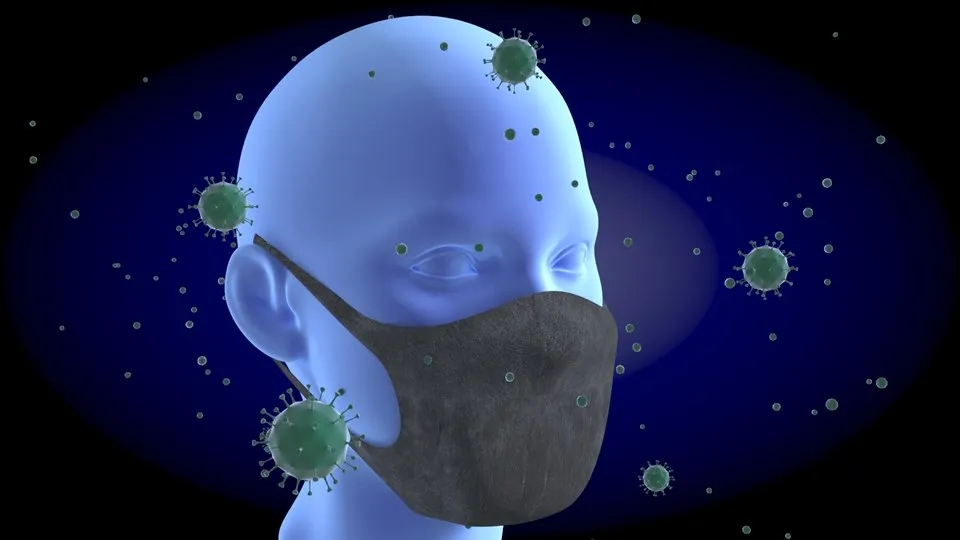Novel cellulose‑based triboelectric respiratory protection with improved breathability and additional disinfection effects
A research group at the FSCN research centre, Mid Sweden University will develop more effective filter materials for respiratory protection that can be used to reduce the spread of viruses, similar to Cov-SARS-2, to counter pandemics.
The goal with this pre-study is to demonstrate a cellulose mesh with surface coatings optimized for triboelectric charging. We want to determine the filter efficiency of mare and functionalized filters, validate triboelectric effects in a stack assemble and suggest a filter design with dual functionality i.e. increased surface charge density and self-disinfection.
"We want to develop effective particle protection in the respiratory protection that makes it easier to breathe and hopefully also properties that further reduce the risk of infection spreading through self-disinfection", says Christina Dahlström, senior lecturer and project manager at Mid Sweden University.
According to current knowledge, Covid-19 virus is mainly transmitted between humans through exhalation of aerosols and close contact. Respiratory droplets, particles with a diameter from 110 nanometers to 1 millimeter, dominate the transmission. Respiratory protection and filters are therefore an important part of measures to mitigate future pandemics. The existing protections, of the type FFP2, N95 and FFP3, are effective but uncomfortable if used for a long time. These are used in healthcare, while the protections used by ordinary people are of a much simpler nature. They are often thin respirators that act more as spit protection and protect marginally against viruses.

"Our respirators, which are based on cellulose materials with triboelectric properties, make it easier to breathe than with today's respirators. The cool thing is that the breath itself is what activates the triboelectric filtration. The goal is to develop a new type of respiratory protection to reduce the spread of viruses, similar to Cov-SARS-2", says Christina Dahlström.
In addition, to improve the properties, the cellulose membrane can be surface treated with various coatings that can provide additional functions, such as self-disinfection.
"We will compare the efficiency of the developed cellulosic materials with some common synthetic polymer alternatives. In the longer term, the use of renewable cellulose, instead of fossil-based materials, would be very beneficial in terms of national self-sufficiency, cost and waste management. It is also completely in line with several goals in the UN's agenda for sustainable development," says Christina Dahlström.
This is a new research area where researchers at Mid Sweden University and Uppsala University have been granted Vinnova funding for a pre-study for six months 2020/2021. The pre-study is carried out in collaboration with Associate Professor Tomas Kubart, Associate Professor Zhibin Zhang, Dr. Chenyu Wen and Professor Shili Zhang at the Department of Electrical Engineering, Ångströmslaboratoriet, Uppsala University.
The research group also includes Renyun Zhang, associate professor of materials physics at Mid Sweden University and specialist in triboelectricity and static electricity at the nano level. In addition, Magnus Norgren, professor of chemical engineering, and Dr. Ida Svanedal, with special interest in surface chemistry of cellulose-based polymeric materials.
The research is developed in collaboration with Domsjö Fabriker AB in Örnsköldsvik, Scandinavian Nonwoven AB in Kristianstad and Camfil AB in Trosa.
Notation:
Static electricity generated by friction between different materials is a phenomenon that has been observed since time immemorial. But only recently has empirical work with different triboelectric materials as well as theoretical approaches been able to explain the underlying mechanisms. This has built a strong foundation for the ongoing development of new applications that can benefit from triboelectricity.
Facts
Project period
201101—210731
Research centers
Departments
Subjects
Research groups
Project leader

Project members




